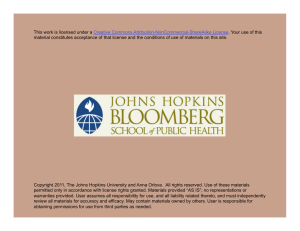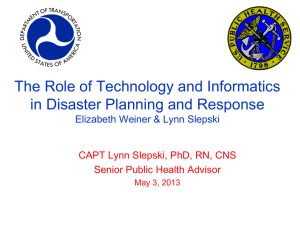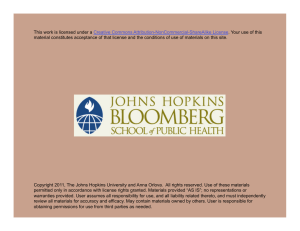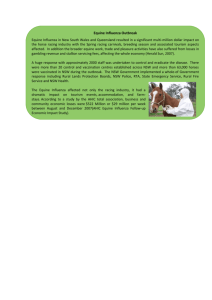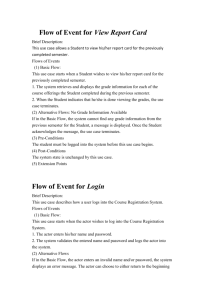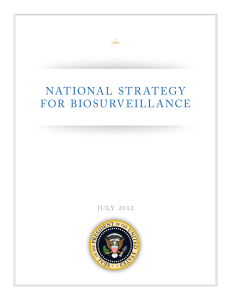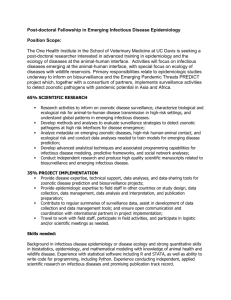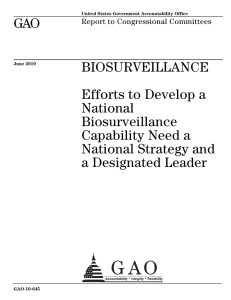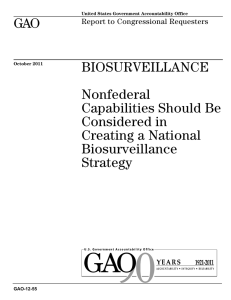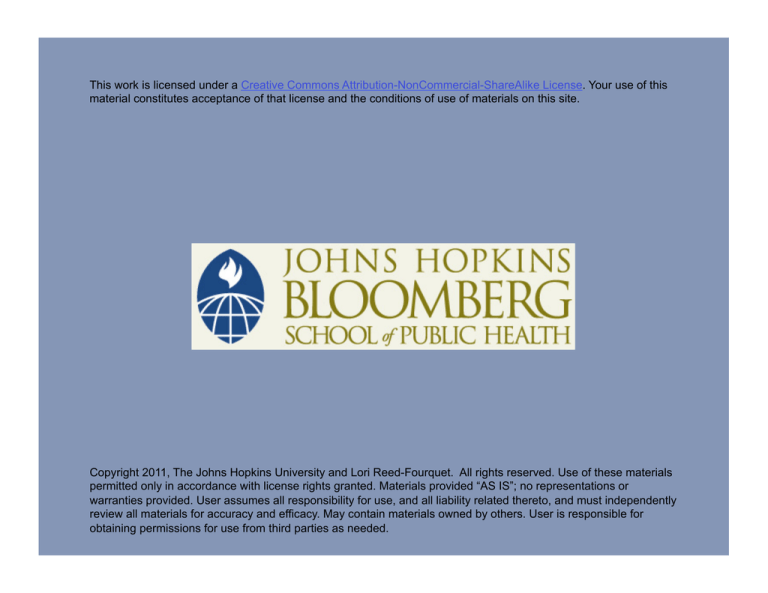
This work is licensed under a Creative Commons Attribution-NonCommercial-ShareAlike License. Your use of this
material constitutes acceptance of that license and the conditions of use of materials on this site.
Copyright 2011, The Johns Hopkins University and Lori Reed-Fourquet. All rights reserved. Use of these materials
permitted only in accordance with license rights granted. Materials provided “AS IS”; no representations or
warranties provided. User assumes all responsibility for use, and all liability related thereto, and must independently
review all materials for accuracy and efficacy. May contain materials owned by others. User is responsible for
obtaining permissions for use from third parties as needed.
Standards Harmonization and Testing
Lori Reed-Fourquet, MS
e-HealthSign
Lori Reed-Fourquet, MS
President, e-HealthSign
Convener, International Organization for Standardization’s
Technical Committee on Health Informatics Privacy and Security
Working Group
Chair, International Organization for Standardization’s Technical
Committee on Health Informatics Patient Safety and Quality Task
Force
HL-7 EHR, PHER, Security
Member, IHE IT Infrastructure, Patient Care Coordination, Quality/
Public Health/Research Technical and Planning Committees
lfourquet@ehealthsign.com
3
Lecture Outline
Section A: Standards Harmonization: Interoperability Requirements
Section B: Standards Harmonization: Standards Selection
Section C: Testing
Section D: Examples, Participation, and Leveraging Standards
Harmonization Products
4
Section A
Standards Harmonization:
Interoperability Requirements
Interoperability Requirements
Use case
- Business case
-
-
Identification of stakeholders and use case perspectives/roles
Description of information flows
Standard requirements analysis
-
-
-
Infrastructure
Security
Content
6
Use Cases
Use cases are descriptions of events that detail what a system (or
systems) must do to achieve a specific mission or stakeholder goals
Use cases convey how individuals and organizations (actors) interact
with the involved systems and strive to provide enough detail and
context for follow-up activities to occur
Usually, the follow-up from a use case is work that leads to the
development or implementation of a specific software system
Source: American Health Information Community (AHIC).
7
Use Case Document Structure
Description
Scope
Stakeholders
Pre-conditions
Obstacles
Post-conditions
Perspectives and scenario details
8
Description
Describe the goals of the use case
- Example: biosurveillance goals
Ability to detect events rapidly
Manage the events
Appropriately mobilize resources in response
Save lives
Example: public health case reporting goals
Electronically integrate case reporting with the EHR
Use data and events to support reporting requirements for
public health and adverse events
Allow for clinical judgment during reporting
-
Integrate population-level information with EHR
Source: American Health Information Community (AHIC).
9
Scope
Contain the problem
Clearly define what is in scope and what is not
Example: biosurveillance
- Capture data from hospitals/emergency departments,
ambulatory care, and laboratory
- For now, no pharmacy data, or any other valuable source that is
not specified (e.g., medical devices)
-
-
Only consider for now the information capture phase
Monitoring and event management currently out of scope
Source: American Health Information Community (AHIC).
10
Stakeholders
List of all parties with direct or indirect interest in the use case as
scoped
Not necessarily an actor within the system as scoped
Example: biosurveillance
- Patient
- Clinician
- Health care delivery organization
-
-
-
-
Laboratory
Public health agencies (state, local, federal)
Resource suppliers
Public
Source: American Health Information Community (AHIC).
11
Pre-conditions
Pre-conditions are the conditions that must be in place before the
start of the use case
Includes
-
-
-
State of a stakeholder
Data that must be available somewhere
An action that must have occurred
Source: American Health Information Community (AHIC).
12
Pre-conditions (cont.)
Example: biosurveillance
- Established network/policies for secure, consistent, reliable,
and accurate information exchange
-
Procedures/agreements supporting data exchange, including
privacy protections, security, sanctions, secondary data uses,
and appropriate data sharing
-
Agreed to method(s) for data categorization, and defined
criteria for sharing data of public health significance
Efforts to minimize “double counting” (e.g., pseudonymisation)
-
-
-
A consistent approach for data anonymization
Health care facilities’ ability to electronically collect, process,
and transmit pertinent public health data in a secure fashion, in
less than one day, using existing data exchange and vocabulary
standards
Source: American Health Information Community (AHIC).
13
Issues and Obstacles
What are the challenges for success of the use case
Example: biosurveillance
-
In general, the absence of the prerequisites presents obstacles
to implementation of the use case
-
-
-
-
Unwillingness to participate
Lack of resources
Regulatory conflicts
Lack of deployed electronic records
Source: American Health Information Community (AHIC).
14
Post-conditions
Post-conditions are the conditions that will be a result or output of
the use case
Includes
-
-
-
The state of a stakeholder upon conclusion of the use case
Data that was created or now available
Identification of actions that may serve as pre-conditions for
other use cases
Source: American Health Information Community (AHIC).
15
Post-conditions
Example: biosurveillance
-
Clinical ER data, ambulatory data, laboratory data, and utilization
data sources can share biosurveillance-relevant patient event data
with public health agencies
-
Biosurveillance data messages are formulated following a standard
structure, coding, and minimal required set of information
-
-
Surveillance data will be transmitted within 24 hours
-
When appropriate, a biosurveillance transmission message data
and/or alert is generated, sent to, and received by the appropriate
users
-
Appropriate entities are registered to send or receive
biosurveillance data
-
System transactions are auditable
Data provided will support the privacy and security of patient
health information, and will also be responsive to requirements for
re-identification for authorized public health investigations
Source: American Health Information Community (AHIC).
16
Perspectives and Scenario Details
Detailed descriptions of use case
- Workflows
-
-
-
Events
Actions within the event
Interactions
Source: American Health Information Community (AHIC).
17
Biosurveillance
Source: American Health
Information Community (AHIC).
18
Biosurveillance
Source: American Health Information Community (AHIC).
19
Individual HC Delivery Organizations Perspective
1.1 Individual Health Care Delivery Organizations Perspective
Source: American Health Information Community (AHIC).
20
Use Case Requirement Analysis
For each event and action
- Infrastructure requirements
-
-
Security requirements
Data/content requirements
21
Infrastructure Requirement Analysis
Transport requirements
- Point-to-point
-
Information shared with more than one entity
Patient identity requirements
-
Persistent across multiple care events
Terminology services
Notifications
Alerts
22
Security Requirement Analysis
User/system authentication and credentials
Collect/communicate audit trail
Secure transport
Digital signature
Access control
Verify patient consent, authorizations, and advance directives
Anonymize and pseudonymize data
Maintain consistent time across enterprises
23
Data/Content Requirement Analysis
Laboratory results
Medical summaries (ambulatory)
Medical summaries (inpatient)
Radiology results
Pharmacy data
Insurance data
Immunization data
Anonymized content
24


